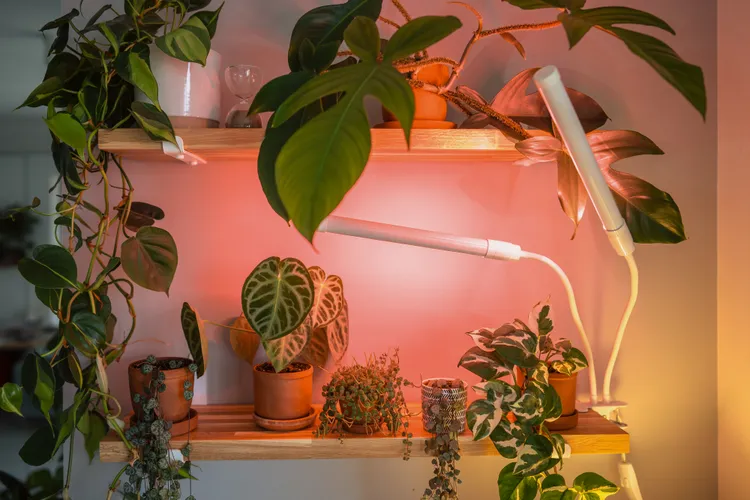Gardeners and plant enthusiasts are often interested in various scientific and/or folkloric methods to help improve the health of their plants. While some methods can be easily proven to work (or not) based on scientific studies or evidence, others are not as obvious.
We asked some gardening professionals to share their thoughts on the use of red light to grow plants, its potential effectiveness, and tips on how to use it.
Does Red Light Help Plants Grow?
Given the popularity of both red and blue colored grow lights, and the enthusiastic discussions surrounding red light in grower forums and communities online, the anecdotal evidence suggests that using red light to promote better plant growth does make a difference.
Generally, most growers who utilize interior grow lights use full-spectrum lights, as opposed to single color lights such as red or blue, and this is mostly a matter of preference based on a grower’s needs, budget, and set-up.
Linda Pereira, who is a professional gardener and garden designer, likes to use full-spectrum LEDs for growing vegetable seedlings in spring. She notes that using grow lights allows her to grow some heirloom varieties of peppers that have a long season and need an early start from seed in spring. She also starts lettuce and basil seedlings indoors using LED full-spectrum lights to allow for earlier harvests.
How Does Red Light Help Plants?
There are several ways that red light is believed to help plants grow, but it’s important to understand the principles behind how this works. The light spectrum is composed of the seven familiar “rainbow” colors (red, orange, yellow, green, blue, violet, indigo).
Some specific wavelengths or colors of light, also known as light quality, are known to affect plant growth, particularly red and blue light, which are crucial to photosynthesis (the conversion of light to energy that nourishes plants).
- Different Colors of Light Have Different Functions: Goodspeed agrees that blue and red light are crucial for different stages of plant development. Blue light, she says, supports vegetative growth, while red light promotes flowering, fruiting, and later stages of growth in the plant’s seasonal life cycle.
- Infrared Light Is Different From Red Light: Red light is considered “visible” light: that is, the red color is detectable and directly affects the surfaces of plants. Infrared light is considered “invisible” light (the red color is not visible) and plays a role in plant signaling, Goodspeed says. However, she also says that too much infrared light may cause heat stress, which can ultimately harm plants in the long term.
- Far Red Light: There is a third type of red light that occurs between visible red light and infrared light wavelengths known as far red light. This type of light is considered the most effective for promoting plant growth, but there is not a great deal of scientific evidence available yet to prove this, so much of the information is anecdotal from growers.
Tips for Using Red Light for Plants
There are several ways to utilize red light to help encourage plant growth, and some important factors to keep in mind when choosing products.
- Types of Lights: There are various types of lights available for growing, including those that use fluorescent, incandescent, or LED bulbs. In recent years, LED bulbs have become the most popular and seemingly preferred option.
- Using LED Lights: Many indoor growers and houseplant enthusiasts prefer LED lights for plants, which is a newer technology that provides bright light with low heat. LED bulbs are also more energy efficient than other kinds of bulbs, making them a more budget-conscious choice in the long run (though they may cost more upfront). It’s widely agreed that newer versions of LED bulbs are more reliable and efficient than earlier designs, so it’s worthwhile to explore this more closely by researching grow lights among experienced users: this can also help you choose the right size, shape, and type of red grow lights for your needs.
- Timing Is Crucial: The amount of time that plants are exposed to grow lights, including red light or full-spectrum lights, varies based on the type of plant or the stages of its life cycle. For example, seedlings need the most light hours, with 16-18 hours per day being the standard recommendation. The University of Minnesota recommends 12-14 hours of light for flowering houseplants and hydroponic herbs and lettuces, and 14-16 hours of light per day for flowering houseplants.1

